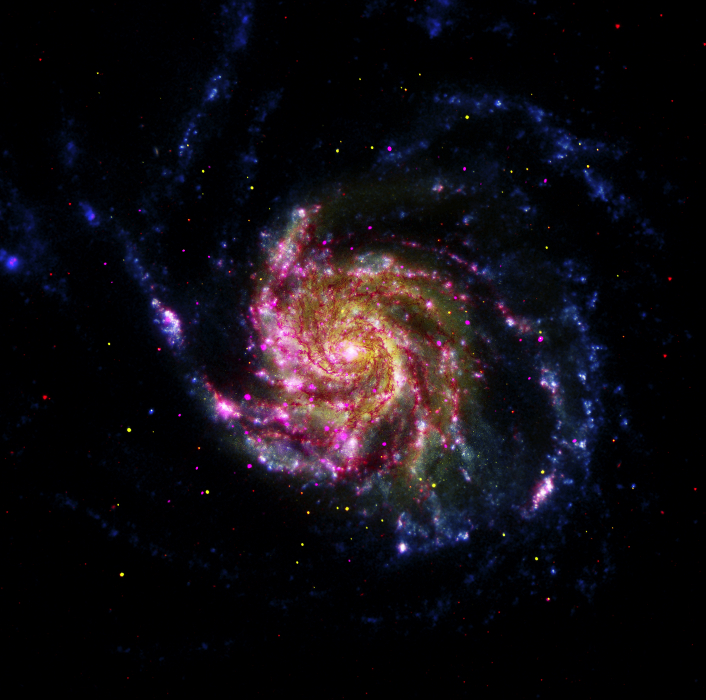
 Credit: Chandra X-ray Center; Spitzer; GALEX; HST
Credit: Chandra X-ray Center; Spitzer; GALEX; HST
The Wonderful World of Color
A picture is worth a thousand words; to scientists, a picture is sometimes worth a thousand papers. Taking pictures allows astronomers to determine the spatial distribution of regions that emit electromagnetic radiation, which helps identify the sources of that radiation. Comparison of images taken in one color (or wavelength) of light with another is especially helpful in identifying processes and phenomena which occur in astronomical objects like planets, star clusters, and galaxies. Combining images in different wavebands provides a colorful view of the Universe, and also provides a quick way to compare and contrast different regions of emission. For example, comparison of infrared and optical images shows where dust (and stars and planets) may be found. Including an X-ray image along with optical and infrared images helps astronomers identify hidden, powerful beasts like neutron stars and black holes, and provides some clues as to how high energy emission from these objects can affect the life of a galaxy. Now you can make beautiful, insightful color images, using archived NASA data from observatories like the Hubble Space Telescope, the GALEX Ultraviolet observatory, the Spitzer Space Telescope, and the Chandra X-ray Observatory. The image above is a multicolor view of the beautiful spiral galaxy M101 obtained by all these Great Observatories. As described by the Chandra X-ray Center, using simple tools available online or as free downloads, you can easily explore the multiwavelength Universe, and give your world an important splash of color. Go out and play.
Published: August 24, 2015
<
HEA Dictionary ● Archive
● Search HEAPOW
● Other Languages
● HEAPOW on Facebook
● Download all Images
● Education ● HEAD
>

Each week the HEASARC
brings you new, exciting and beautiful images from X-ray and Gamma ray
astronomy. Check back each week and be sure to check out the HEAPOW archive!
Page Author: Dr. Michael F. Corcoran
Last modified Tuesday, 27-Feb-2024 10:06:47 EST


